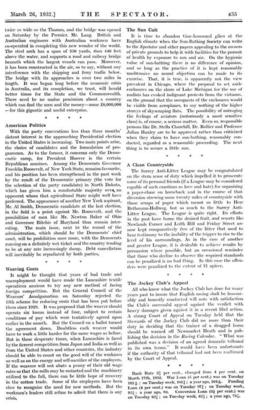Weaving Costs It might be thought that years of bad
trade and unemployment would have made the Lancashire textile operatives . anxious to try any new method of facing foreign competition. But the General Council of the Weavers' Amalgamation on Saturday rejected the fifth scheme for reducing costs that has been put before them since 1929. It was proposed that the weaver should operate six looms instead of four, subject to certain conditions of pay which were tentatively agreed upon earlier in the month. But the Council on a ballot turned the agreement down. Doubtless each weaver would have to work a little harder for the same wages as before. But in these desperate times, when Lancashire is faced by the fiercest competition from Japan and India as well as from the United States and other countries, the industry should be able to count on the good will of the workmen as well as on the energy and self-sacrifice of the employers. If the weavers will not abate a penny of their old wage rates so that the mills may be restarted and the machinery utilized to the full, there can be little hope of recovery in the cotton trade. Some of the employers have been slow to recognize the need for new methods. But the workmen's leaders still refuse to' admit that there is any crisis.


































 Previous page
Previous page